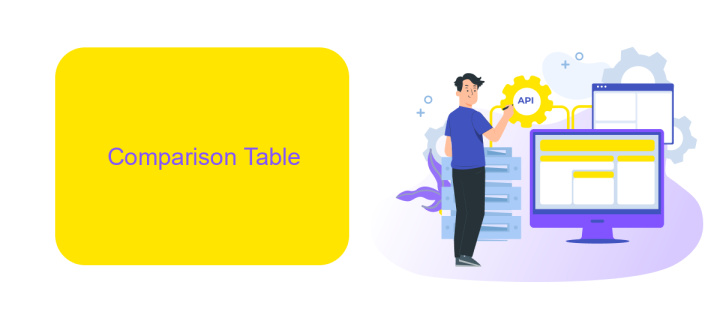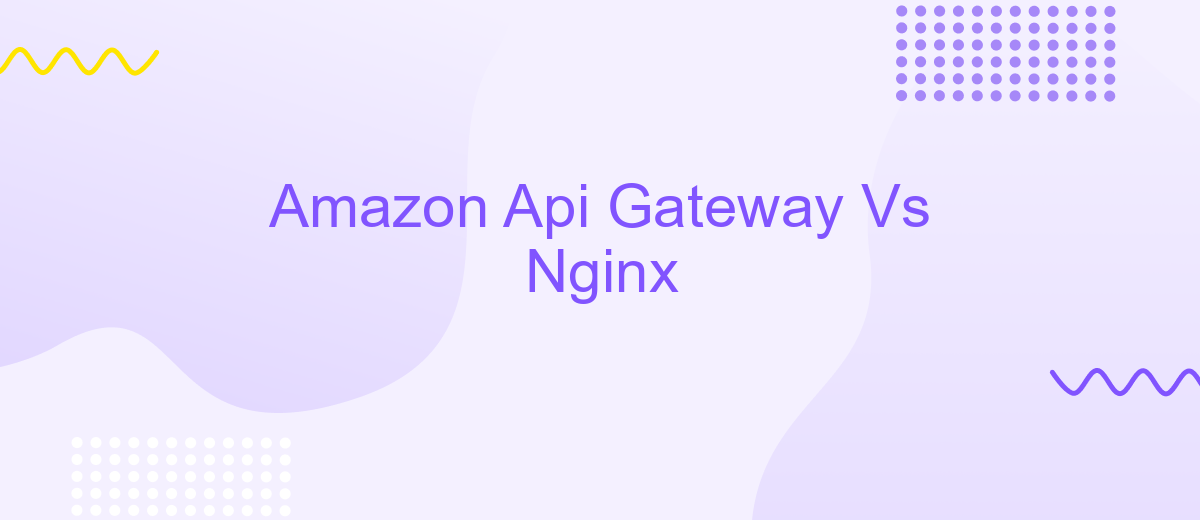Amazon Api Gateway Vs Nginx
When it comes to managing and routing API requests, two powerful tools often come into play: Amazon API Gateway and NGINX. Both offer robust features for handling traffic, but they cater to different needs and use cases. This article delves into the key differences, advantages, and potential drawbacks of each, helping you make an informed decision for your specific requirements.
Introduction
In the realm of modern web architecture, choosing the right API gateway is crucial for efficient and secure data flow. Amazon API Gateway and Nginx are two popular solutions, each with its own set of features and benefits. This article aims to provide a comprehensive comparison to help you make an informed decision.
- Amazon API Gateway: A fully managed service that makes it easy for developers to create, publish, maintain, monitor, and secure APIs at any scale.
- Nginx: A versatile web server that also functions as a reverse proxy, load balancer, and API gateway, known for its high performance and low resource consumption.
Understanding the strengths and weaknesses of each option is essential for optimizing your backend architecture. Whether you're looking for seamless integration with other AWS services or a highly customizable open-source solution, this guide will help you identify the best fit for your needs.
Comparison Table

When comparing Amazon API Gateway and Nginx, it is essential to consider their core functionalities. Amazon API Gateway is a managed service that allows developers to create, publish, maintain, monitor, and secure APIs at any scale. It is particularly well-suited for serverless applications and provides seamless integration with AWS services. On the other hand, Nginx is a high-performance web server that also functions as a reverse proxy, load balancer, and HTTP cache. It is known for its speed and reliability in handling high traffic loads.
Another key aspect is ease of integration. Amazon API Gateway offers built-in support for various AWS services, making it an excellent choice for those already within the AWS ecosystem. For more complex integration needs, services like ApiX-Drive can facilitate the connection between Amazon API Gateway and other third-party applications. Nginx, while versatile, requires more manual configuration and scripting to achieve similar levels of integration. Thus, the choice between the two often depends on the specific requirements and existing infrastructure of the project.
Detailed Comparison

When comparing Amazon API Gateway and Nginx, it's essential to consider their core functionalities and use cases. Amazon API Gateway is a fully managed service that makes it easy for developers to create, publish, maintain, monitor, and secure APIs at any scale. Nginx, on the other hand, is a high-performance HTTP server and reverse proxy, as well as an IMAP/POP3 proxy server, often used for load balancing and serving static content.
- Scalability: Amazon API Gateway automatically scales to handle the number of requests your API receives, while Nginx requires manual configuration to manage scaling.
- Integration: Amazon API Gateway integrates seamlessly with other AWS services, whereas Nginx may require additional configuration and third-party tools for similar integrations.
- Security: Amazon API Gateway offers built-in security features such as AWS IAM, Amazon Cognito, and API keys, while Nginx relies on external modules and configurations for security.
- Cost: Amazon API Gateway has a pay-as-you-go pricing model, which can be cost-effective for small to medium-sized applications. Nginx is open-source and free, but enterprise features are available at a cost.
In conclusion, the choice between Amazon API Gateway and Nginx depends on your specific needs. For seamless integration with AWS services and automatic scaling, Amazon API Gateway is a strong choice. However, if you require a high-performance server with more control over configurations, Nginx might be more suitable. Additionally, services like ApiX-Drive can help streamline the integration process, making it easier to connect various applications and services.
Case Studies

In a recent project, a large e-commerce company needed to streamline its API management to handle millions of requests daily. They were torn between using Amazon API Gateway and NGINX. After thorough evaluation, they decided to implement both for different aspects of their architecture.
The Amazon API Gateway was utilized for its seamless integration with AWS services, enabling secure and scalable API management. This choice significantly reduced the time required for backend maintenance and allowed the team to focus on feature development. On the other hand, NGINX was employed for its robust load balancing and reverse proxy capabilities, ensuring high availability and efficient traffic distribution.
- Amazon API Gateway for API management and integration with AWS services.
- NGINX for load balancing and reverse proxy.
- ApiX-Drive for automating data integration between various services.
By leveraging the strengths of both Amazon API Gateway and NGINX, along with the automation capabilities of ApiX-Drive, the company achieved a highly efficient and scalable infrastructure. This hybrid approach not only optimized their API management but also ensured a seamless user experience.
Conclusion
In conclusion, both Amazon API Gateway and Nginx offer robust solutions for managing and deploying APIs, each catering to different needs and use cases. Amazon API Gateway excels in providing a fully managed service with seamless integration into the AWS ecosystem, making it an ideal choice for enterprises already leveraging AWS services. It offers built-in features like monitoring, throttling, and security, which simplify the process of API management.
On the other hand, Nginx stands out with its high performance, flexibility, and extensive customization options. It is particularly suitable for organizations that require fine-grained control over their API infrastructure and are comfortable managing their own servers. For businesses looking to streamline their integration processes, services like ApiX-Drive can be invaluable. ApiX-Drive facilitates seamless integration between different platforms, enhancing the overall efficiency of API management. Ultimately, the choice between Amazon API Gateway and Nginx should be guided by the specific requirements and existing infrastructure of your organization.


FAQ
What is the primary difference between Amazon API Gateway and Nginx?
Can Nginx be used for API management like Amazon API Gateway?
Which service is better for handling high traffic: Amazon API Gateway or Nginx?
How do both services handle security?
Is there a service that simplifies the integration and automation of these tools?
Apix-Drive is a simple and efficient system connector that will help you automate routine tasks and optimize business processes. You can save time and money, direct these resources to more important purposes. Test ApiX-Drive and make sure that this tool will relieve your employees and after 5 minutes of settings your business will start working faster.

